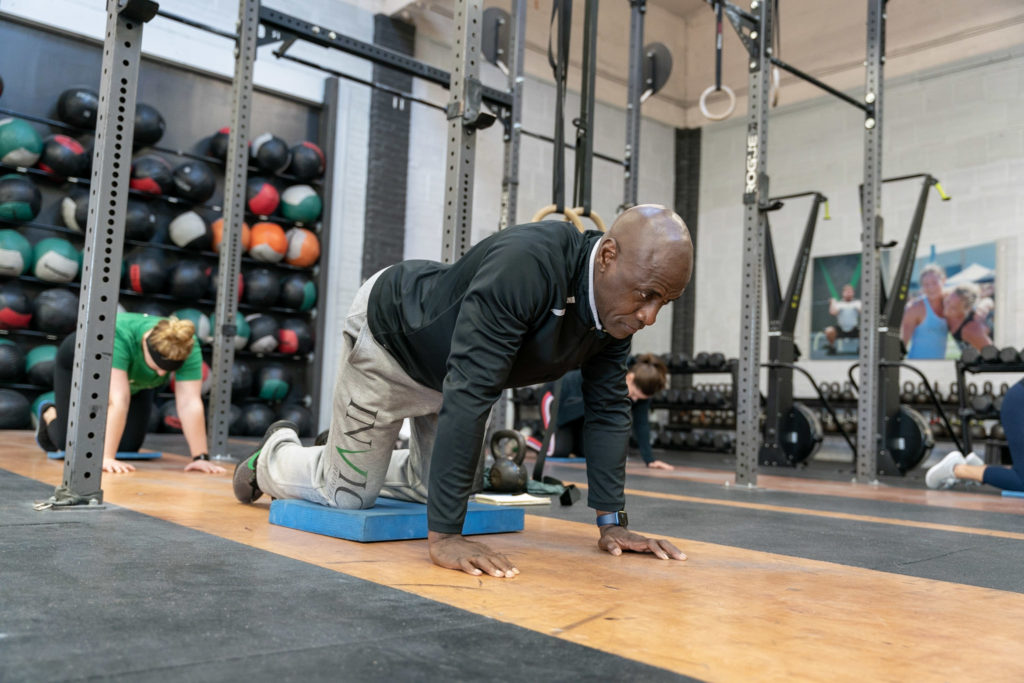
3 Principles of PRI That Can be Applied to Any CrossFitter
Written by TJ O’Brien
So we know that the mind-body connection is an important aspect of training. Any and every high-level athlete will acknowledge how their mental game affects their performance.
But what do we know about how our breathing, specifically the way we draw air in and exhale air out, affects everything from our posture, to range of motion, and even physical/emotional pain?
I’ve been looking into this question through the lens of new techniques offered by a school called the “Postural Restoration Institute,” or PRI for short. They contend that the root of a lot of physical symptoms can be traced back to how we inhale and exhale—specifically whether or not our diaphragm is the main mover of air, or whether accessory muscles (like the ones in our neck) are doing the work instead.
There are multiple thousand-dollar courses that one can take through PRI, designed to help people learn to apply their non-manual techniques (so not massage), within a physical therapy or sports massage context.
If I trap you in a corner at the next party, we will talk about the details of all of this, BUT, suffice it to say that they are complex.
So instead of diving deep, I’m going to tell you a bit of how my experience with persistent neck tightness and pain, led me to understand a few takeaways about how my breathing affects my posture and levels of pain/tightness in my body.
Here are three principles from PRI that can be applied to any CrossFitter
- How to exhale fully
- How to Inhale without using accessory muscles
- Don’t look for symmetry in a body that is inherently asymmetrical
Full Exhales
If we don’t exhale fully at the end of each breath cycle, we accumulate excess CO2 in our cells, which can become a stressor. If you’ve ever sighed during a stressful moment, you’ll know that focusing on the letting-go of air tends to subsequently let go of a little bit of stress.
When we are stressed, we tend to breathe more shallow breaths, which can exacerbate the problem. Learning to exhale fully helps to strengthen diaphragm muscles that have been weakened by a lifetime of short breaths.
Inhaling WITHOUT Using Accessory Muscles
This is me, especially when stressed. Over the years, it had become my body’s default-mode to use my neck muscles to help draw air into my lungs. In the words of my PT, “Instead of using your diaphragm to draw air in and help open your ribcage, you’re using your neck muscles to effectively ‘deadllift’ your rib cage up so that you can get more air inside.”
This led to a reliance on those muscles that eventually led to a lot of pain…
Don’t Look for Symmetry
Your body isn’t symmetrical on the inside. Nearly everything, down to the hemispheres of your brain, are slightly different sizes. The organs that are housed by our ribcage are not laid out in perfect symmetry. Therefore it follows that one diaphragm, one hip, or one bicep may be a little stronger than the other.
Cool!? How do I apply some of this stuff?
Full Exhales – take a relaxed inhale, then on the exhale, make a hissing sound and keep going, yes keep, going, and going and going, until you feel your abs turn on to force that last bit of air out. The next time you go to brace and lift, check in with those same muscles you felt. Can you turn them on to help strengthen your brace?
Inhaling Without Accessory Muscles – You might think “belly breathing,” but that is just half (the front half) of the picture. Instead, practice drawing inhales quietly and imagine a hot air balloon expanding 360 degrees within your rib cage.
Don’t Look for Symmetry – you won’t find it! If you want more resources on this idea, and on PRI, check out my favorite guy to explain it all on YouTube, Neal Hallinan. Here is his channel
PRI questions a lot of commonly accepted beliefs about how to treat aches and pains in the body. I warn you, you’ll probably leave inquiries into it with more questions than answers. It’s been a fascinating exploration for me so far, and one that is still ongoing.
In the meantime, if this piques your interest, let’s discuss!